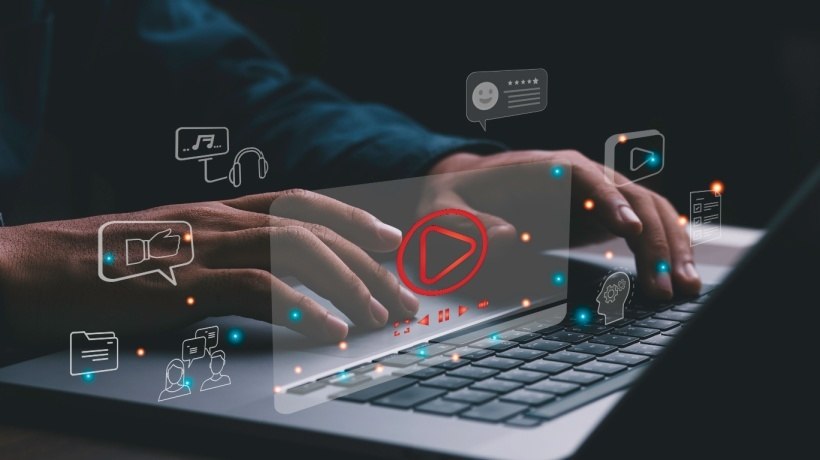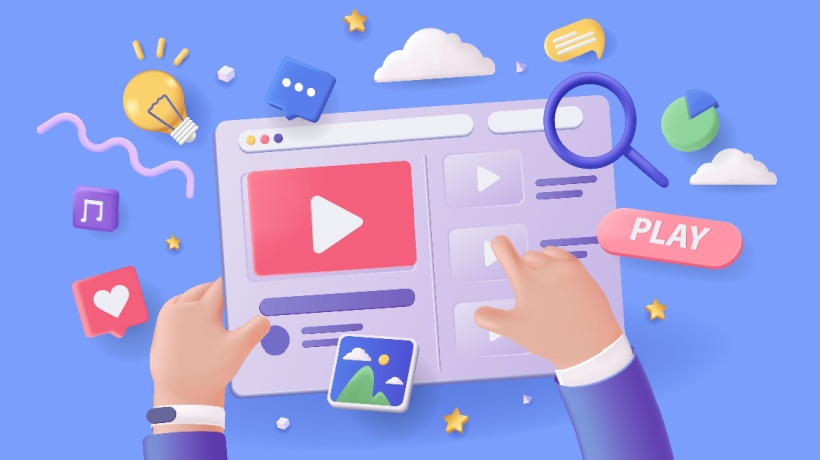Multimedia In eLearning
Even a simple eBook or PDF book comes under the realm of eLearning. However, we seldom recognize them as eLearning, as they don’t use multimedia. That sums up the role multimedia plays in eLearning. It is the use of multimedia that makes eLearning so effective and engaging. An eLearning service provider must know how to make the most of multimedia to engage the learner. Before we talk about the use of multimedia, let’s first understand some basics.
Humans are multi-sensory. That means they can interact and communicate with five different senses: sight, hearing, touch, smell, and taste. According to Minoli and Keinath, multimedia refers to an interdisciplinary technology that utilizes the multi-sensory nature of humans. Digital multimedia integrates five basic types of media.
In simple terms, by multimedia we mean a combination of text, graphic, art, sound, animation, and video delivered by any electronic means.
Five basic types of media form the world of multimedia. Let’s understand each of these and how to use them in eLearning.
1. Text
Text is the most basic form of media. It includes alphanumeric characters and special characters. Variations in the text can be materialized by the use of text types, sizes, fonts, colors, and background colors.
Making best use of text: Reading text is the most primary form of instruction delivery. Learners get ample time to read and comprehend text. Here are some tips for the best use of text in eLearning:
- Make text font readable. Avoid very fancy or cursive text.
- Play with text size. Use keywords in larger font to make them stand out.
- Use proper background and font color to make text stand out.
- Use text color to emphasize and highlight only. The normal text should be black or grey as per the background.
2. Static Images
Images are perhaps the oldest form of media. Humans learned to draw images even before they learned to write text. Images can be of many types. Common images include illustrations, photographs, icons, line art, clip art, etc. Here are some tips for the best use of images in eLearning:
- Use an image that supports the text.
- Never use an image just to fill the content area. Use images only when they add value. Otherwise, the image becomes a distractor for learning although it may be visually appealing.
- Decide the type of images to be used. Be consistent with the image format.
3. Motion Images/Animations
Animations are the main attractions in eLearning. Animations can be based on text, images, or both. It can be 2D or 3D. Here are some tips for the best use of images in eLearning:
- Keep in mind the learning factor. Animations should be fostering learning rather than just attracting the learner.
- Judiciously use animation speed and elements. Don’t make too many moving elements. The ideal is one or two at a time so that learner can focus on it. Optimize the speed.
- If character animation is used, take care of hand movement and gesture.
4. Audio
Audio is a powerful medium of instruction. Learners follow the audio and engage with it the speaker. Here are some tips for the best use of audio in eLearning:
- Syncing of audio with the on-screen elements is very critical. If learners are listening to something and it is not reinforced by the text or visual elements, it is detrimental for learning. Learners will be at a loss to comprehend.
- Audio should not be verbatim of the on-screen text. It is the function of the screen reader, not narration. Audio should be explanatory and text and graphics should be reinforcing.
- Take care of tone, narration speed, and accent.
5. Video
Videos are getting more and more popular in the learning community. Video can be animated or shoot. A video in itself is multimedia that uses audio, visual, and text. Here are some tips for the best use of audio in eLearning:
- Keep videos short and crisp. It is difficult for an average learner to pay attention to learning videos for more than 3-5 minutes.
- Videos are best used as small learning nuggets with short messages.
- Use social learning platforms to deliver videos.
Multimedia plays a critical role in making eLearning effective. However, it needs a detailed design and instructional approach to make each element of multimedia stand out and contribute to the learning process. An effective multimedia strategy can make learning outcomes much more efficient and effective.










